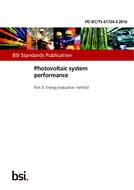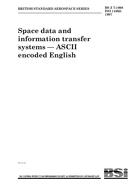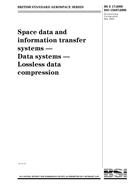Description
BS PD IEC/TS 61724-3 – Photovoltaic system performance
BS PD IEC/TS 61724-3:2016, which is a Technical Specification, defines a procedure for measuringand analyzing the energy production of a specific photovoltaic system relative to expectedelectrical energy production for the same system from actual weather conditions as defined bythe stakeholders of the test. The method for predicting the electrical energy production isoutside of the scope of this technical specification. The energy production is characterizedspecifically for times when the system is operating (available); times when the system is notoperating (unavailable) are quantified as part of an availability metric.
For best results, this procedure should be used for long-term performance (electrical energyproduction) testing of photovoltaic systems to evaluate sustained performance of the systemover the entire range of operating conditions encountered through the duration of the test(preferably one year). Such an evaluation provides evidence that long-term expectations ofsystem energy production are accurate and covers all environmental effects at the site. Inaddition, for the year, unavailability of the system (because of either internal or externalcauses) is quantified, enabling a full assessment of electricity production.
In this procedure, inverter operation and other status indicators of the system are firstanalyzed to find out whether the system is operating. Times when inverters (or othercomponents) are not operating are characterized as times of unavailability and the associatedenergy loss is quantified according to the expected energy production during those times. Fortimes when the system is operating, actual photovoltaic system energy produced is measuredand compared to the expected energy production for the observed environmental conditions,quantifying the energy performance index, as defined in IEC 61724-1. As a basis for thisevaluation, expectations of energy production are developed using a model of the PV systemunder test that will serve as the guarantee or basis for the evaluation and is agreed upon byall stakeholders of the project. Typically, the model is complex and includes effects of shadingand variable efficiency of the array, but the model can also be as simple as a performanceratio, which may be more commonly used for small systems, such as residential systems.
The procedure evaluates the quality of the PV system performance, reflecting both the qualityof the initial installation and the quality of the ongoing maintenance and operation of the plant,with the assumption and expectation that the model used to predict performance accuratelydescribes the system performance. If the initial model is found to be inaccurate, the design ofthe system is changed, or it is desired to test the accuracy of an unknown model, the modelmay be revised relative to one that was applied earlier, but the model should be fixedthroughout the completion of this procedure.
The aim of this technical specification is to define a procedure for comparing the measuredelectrical energy with the expected electrical energy of the PV system. The frameworkprocedure focuses on items such as test duration, data filtering methods, data acquisition,and sensor choice. To reiterate, the procedure does not proscribe a method for generatingpredictions of expected electrical energy. The prediction method and assumptions used areleft to the user of the test. The end result is documentation of how the PV system performedrelative to the energy performance predicted by the chosen model for the measured weather;this ratio is defined as the performance index in IEC 61724-1.
This test procedure is intended for application to grid-connected photovoltaic systems thatinclude at least one inverter and the associated hardware.
Cross References:
IEC 61724-1
IEC TS 61836
ISO/IEC Guide 98-1:2009
ISO/IEC Guide 98-3:2008
ISO 5725
ISO 8601:2004
ASTM G113-09
IEC TS 61724-2
IEC 62446-1
IEC 62670-2
ASTM E2848-11
All current amendments available at time of purchase are included with the purchase of this document.
Product Details
- Published:
- 06/07/2018
- ISBN(s):
- 9780539000795, 9780580899706
- Number of Pages:
- 34
- File Size:
- 1 file , 1.1 MB
- Product Code(s):
- 30373937, 30373937, 30322205
- Note:
- This product is unavailable in Ukraine, Russia, Belarus






